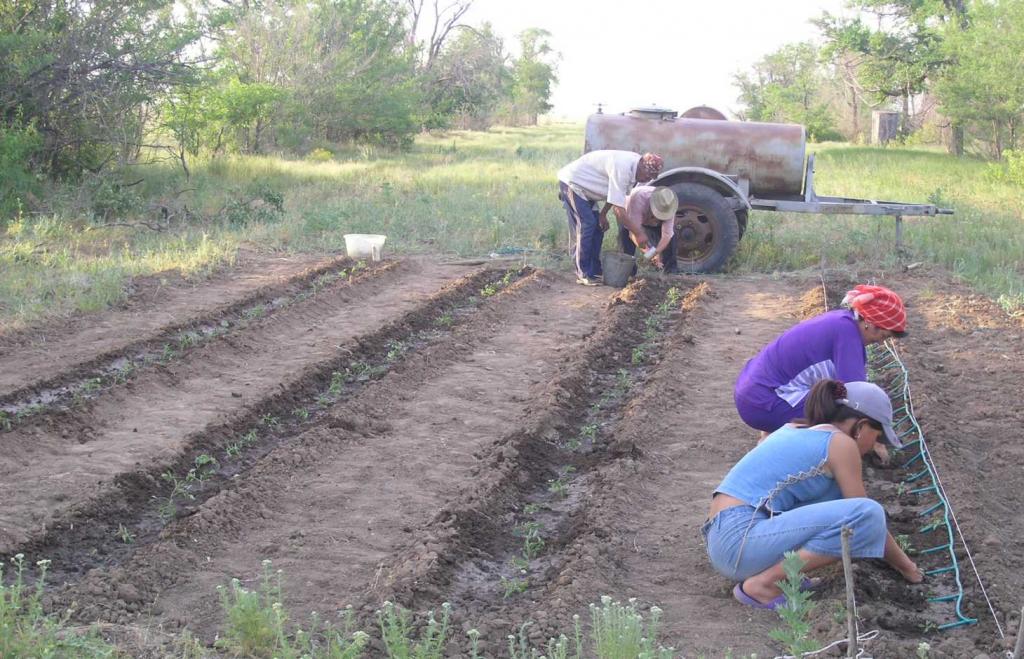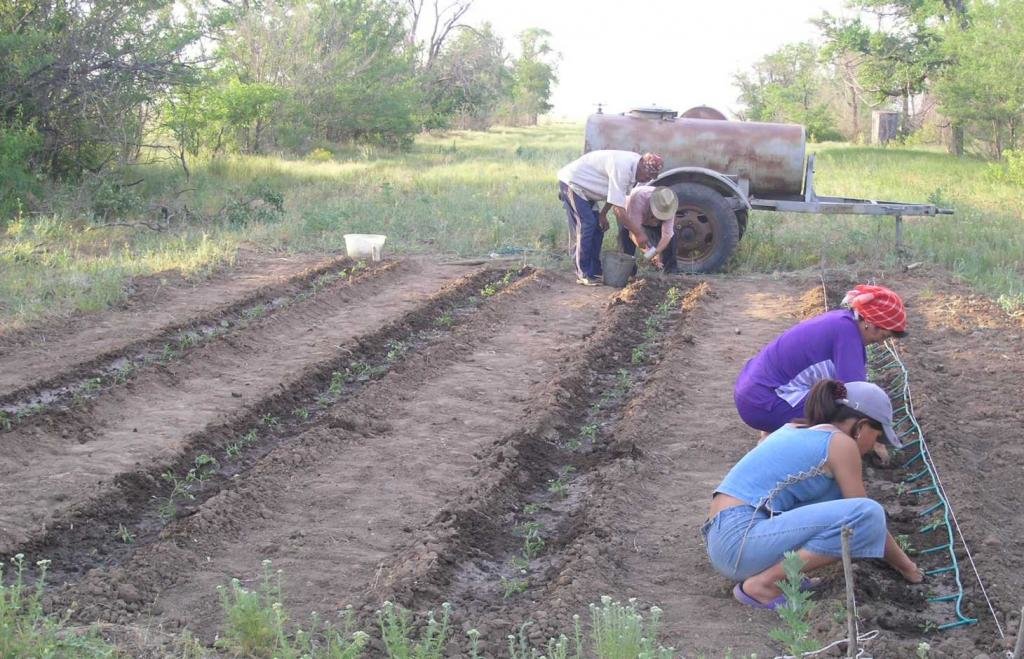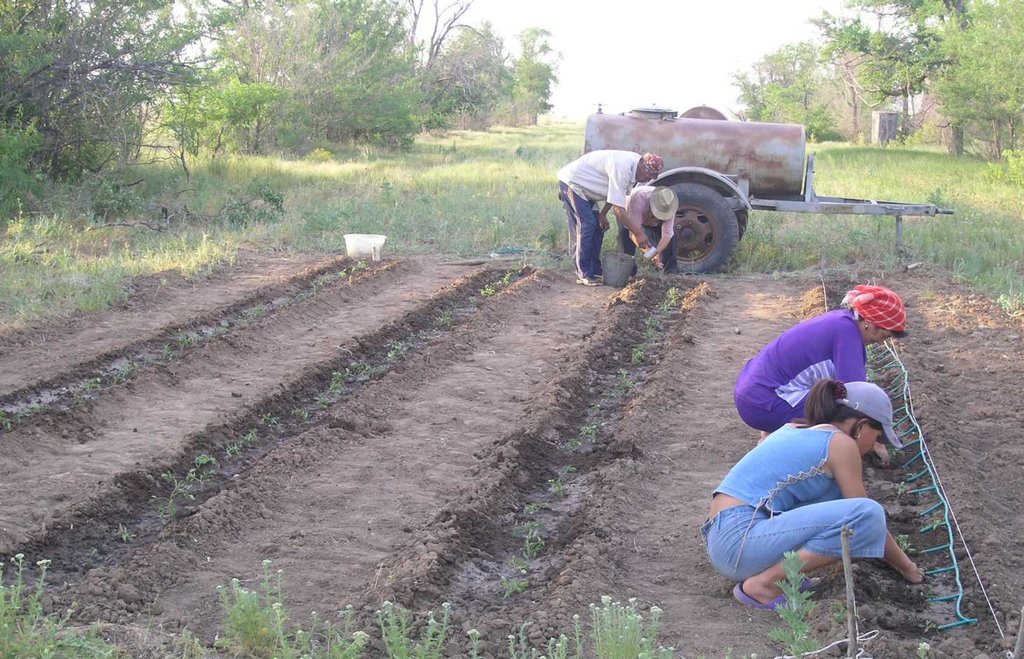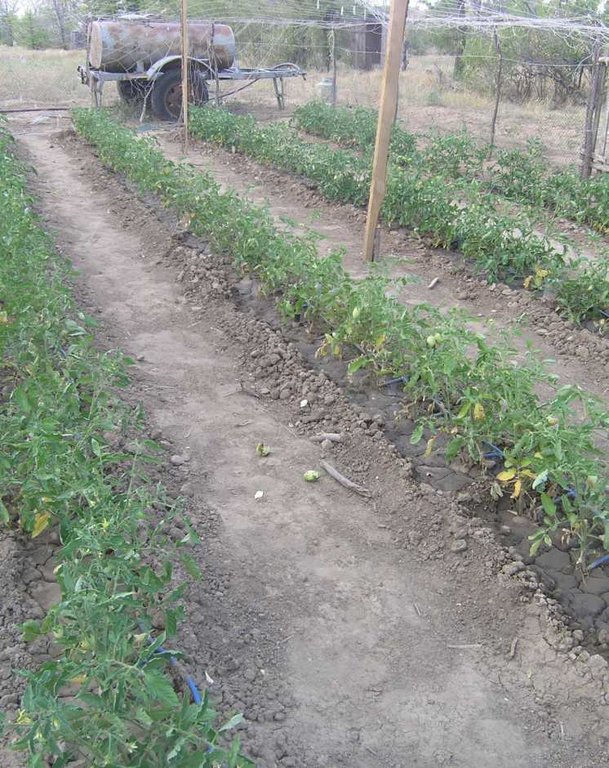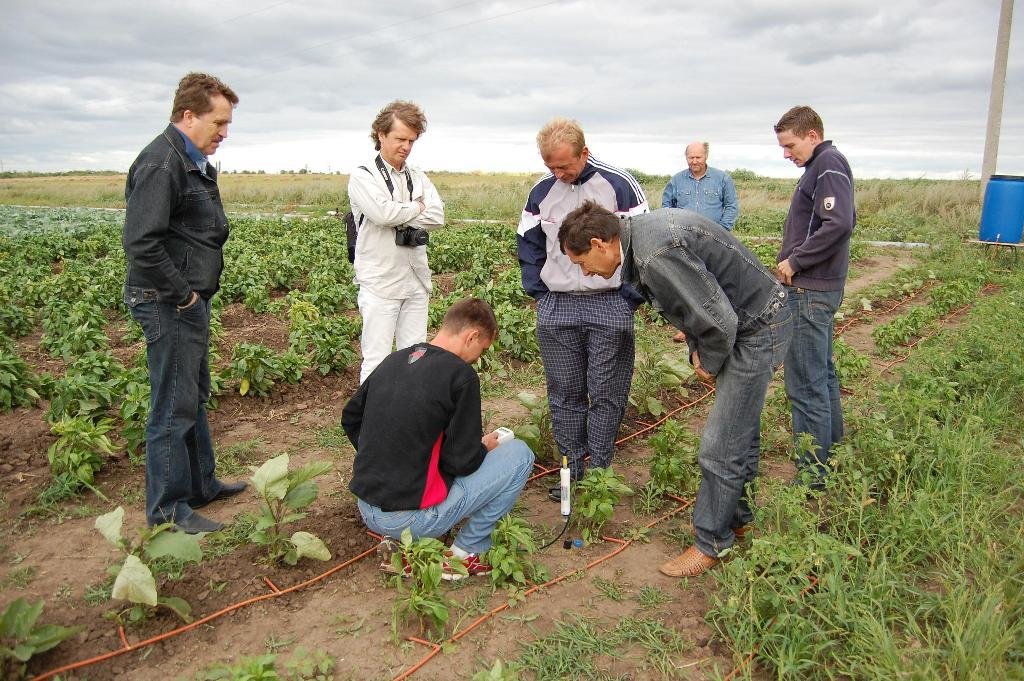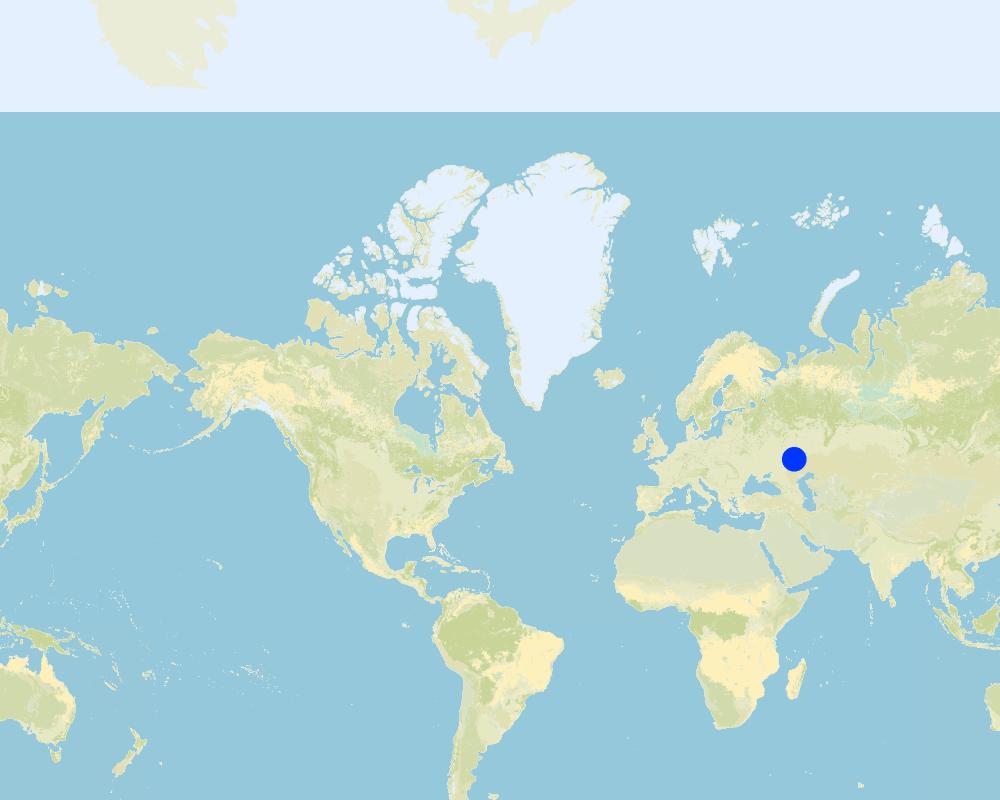Concerted thinking on common problems of water scarcity [Federación Rusa]
- Creación:
- Actualización:
- Compilador: Anatoly Zeyliger
- Editor: –
- Revisor: David Streiff
Жить рядом – думать об общей воде (Russian)
approaches_2426 - Federación Rusa
Visualizar secciones
Expandir todo Colapsar todos1. Información general
1.2 Detalles de contacto de las personas de referencia e instituciones involucradas en la evaluación y la documentación del Enfoque
Nombre del proyecto que facilitó la documentación/ evaluación del Enfoque (si fuera relevante)
DESIRE (EU-DES!RE)Nombre de la(s) institución(es) que facilitaron la documentación/ evaluación del Enfoque si fuera relevante)
Moscow State University of Environmental Engineeri (Moscow State University of Environmental Engineeri) - Federación Rusa1.3 Condiciones referidas al uso de datos documentados mediante WOCAT
¿Cuándo se compilaron los datos (en el campo)?
27/02/2009
El compilador y la/s persona(s) de referencia claves aceptan las condiciones acerca del uso de los datos documentados mediante WOCAT :
Sí
1.4 Referencia/s al/los Cuestionario(s) de Tecnologías MST
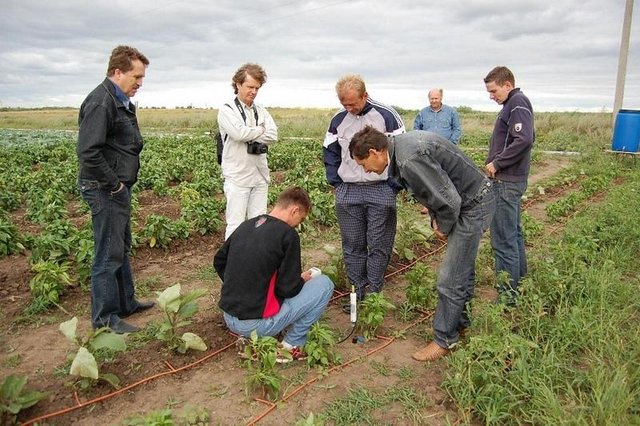
Drip irrigation [Federación Rusa]
Drip irrigation systems gradually apply water into the zone around the stem of the irrigated plant.
- Compilador: Anatoly Zeyliger
2. Descripción del Enfoque MST
2.1 Breve descripción del Enfoque
Testing and disseminating of a water-saving technology like drip irrigation
2.2 Descripción detallada del Enfoque MST
Descripción detallada del Enfoque MST:
Aims / objectives: The objective of the Rural Development Programme (RDP) is to assist farmers who have to deal with difficult environmental conditions (drought, steep slopes) in applying sustainable farming practices either at the implementation phase or for maintenance. The programme is carried out to: 1) improve the socio-economic conditions of rural areas; 2) prevent land abandonment, and 3) prevent on-site and off-site damage caused by land degradation and erosion. To achieve these objectives, the RDP identifies different lines of action: 1) compensation for difficult natural conditions; 2) combating erosion; 3) reducing farming intensity; and 4) promoting eco-friendly agricultural practices.
Methods: The main method used in RDP is to provide farming subsidies for farming practices following a cross-compliance principle. Each line of action implies a combination of conservation measures that are subsidised, but only when applied in combination. Hence, single conservation measures outside of these lines of action are not subsidised.
Stages of implementation: Two years of testing with following phase of result dissemination.
Role of stakeholders: The level of subsidy is based on estimated implementation and maintenance costs and possible loss of productivity caused by the conservation measures. These values were obtained after consultation with various stakeholder groups including farmer organisations with agricultural cooperatives. However, because of limited resources, not all farmers will receive subsidies for conservation measures. Priority is given to: 1) farmers who have 50% of their land within the Nature 2000 network, a European-wide network of protected areas for the preservation of habitats and threatened species; 2) farmers with >50% of their land in unfavourable zones; and 3) farmers who did not receive subsidy in previous RDPs.
Other important information: Furthermore, areas with slopes of more than 20% are not subsidised in this programme since it is recommended that no agriculture should take place. Instead, reforestation of these areas is subsidised. RDPs are developed for a period of seven years. At the end of this period, a new RDP is defined and priorities and levels of subsidies may be changed. The present RDP is valid for the period 2007-2013
2.3 Fotos del Enfoque
2.5 País/ región/ lugares donde el Enfoque fue aplicado
País:
Federación Rusa
Región/ Estado/ Provincia:
Russia
Especifique más el lugar :
Pallasovsky district, Volgograd region
Map
×2.6 Fechas de inicio y conclusión del Enfoque
Indique año del inicio:
2002
Año de conclusión (si el Enfoque ya no se aplica):
2011
2.7 Tipo de Enfoque
- proyecto/ basado en un programa
2.8 Propósitos/ objetivos principales del Enfoque
The Approach focused on SLM only
To consider the common problems of water scarcity at villages remote from water sources. To provide the best examples of water usage and initiate implementation of water-saving technologies.
The SLM Approach addressed the following problems: The main problem to be addressed by this approach is the conflicts over the common use of water supplied to the villages. In this dry area, water is scarce and has to be brought from remote rivers, lakes and artificial water storage facilities through irrigation channels. In the dry season, when water demand exceeds availability, there is a pivotal problem of poor water availability for all villagers. During the most difficult period, water even has to be transported to the villagers’ houses by car.
2.9 Condiciones que facilitan o impiden la implementación de la/s Tecnología/s aplicadas bajo el Enfoque
normas y valores sociales/ culturales/ religiosos
- impiden
People do not know much about water-saving technologies. Whatever they learn about it, they are convinced that it is very complicated or too costly.
Treatment through the SLM Approach: Organization of training seminars, sharing ideas between farmers
marco de trabajo legal (tenencia de tierra, derechos de uso de tierra y agua)
- impiden
The existing land ownership, land use rights / water rights moderately hindered the approach implementation
3. Participación y roles de las partes interesadas involucradas
3.1 Partes interesadas involucradas en el Enfoque y sus roles
- usuarios locales de tierras/ comunidades locales
Testing of drip irrigation on their subsidiary plots, participation in monitoring activities, training and dissemination.
Owing to simple installation and control of drip irrigation, it is promising that disadvantaged people grow vegetables and fruits for their own consumption in order to improve their income and to save water for domestic use.
- organizaciones comunitarias
Collective farmers are involved in approach for future implementation of it at vegetable plantation
- especialistas MST/consejeros agrícolas
Agronomists as well as reseachers were involved in this approach by development scheme of applications, advising people.
- gobierno nacional (planificadores, autoridades)
Administration of the region was informed about DESIRE project activities. It supports the activities by giving advice, introduction to useful people.
3.2 Involucramiento de los usuarios locales de tierras/ comunidades locales en las distintas fases del Enfoque
| Involucramiento de los usuarios locales de tierras/ comunidades locales | Especifique quién se involucró y describa las actividades | |
|---|---|---|
| iniciación/ motivación | interactivo | SLM specialists - introducing the technology to people Planners - introducing the technology to people ready for testing it |
| planificación | interactivo | SLM specialists - planning of test implementation Land users - agreement to test the technology |
| implementación | apoyo externo | SLM specialists – implementation of schemes development Land users – preparation of experimental plots |
| monitoreo y evaluación | apoyo externo | Land users - simple monitoring of drip irrigation system performance |
| Research | apoyo externo | Land users – reporting of water used for irrigation, workload and harvested yield |
3.4 La toma de decisiones en la selección de Tecnología(s) MST
Especifique quién decidió la selección de las Tecnología/ Tecnologías a implementarse:
- principalmente por especialistas MST en consulta con usuarios de tierras
Explique:
Within the DESIRE project field trip several meetings with stakeholders were performed. Different variant were discussed. Local land users mentioned the technology of drip irigation and ask help of expert in implementation and training.
Decisions on the method of implementing the SLM Technology were made by mainly by land users supported by SLM specialists. Method was chosen as it is saving water resources and labour time, is suitable for the local conditions and not complicated to implement.
4. Apoyo técnico, fortalecimiento institucional y gestión del conocimiento
4.1 Construcción de capacidades / capacitación
¿Se proporcionó la capacitación a usuarios de tierras/ otras partes interesadas?
Sí
Especifique quién fue capacitado:
- usuarios de tierras
Forma de capacitación:
- áreas de demostración
- reuniones públicas
Temas avanzados:
drip irrigation technology, knowledge about varying quantities for plants during the growing season according to the hydrological cycle, etc.
4.2 Servicio de asesoría
¿Los usuarios de tierras tienen acceso a un servicio de asesoría?
Sí
Especifique si servicio proporcionado se realizó:
- en los campos de los usuarios de tierras
Describa/ comentarios:
Name of method used for advisory service: Drip irrigation technology; Key elements: Water cycle: elaborated and explained to stakeholders during an initial stakeholder workshop as well as during field visits, Water-saving technologies: explained to stakeholders during stakeholder workshops. They were based on conceptual approaches and data gathered during field monitoring
Advisory service is quite adequate to ensure the continuation of land conservation activities; The government cannot provide special services in order to ensure its continuation; however, farmer-to-farmer dissemination is working.
4.3 Fortalecimiento institucional (desarrollo institucional)
¿Se establecieron o fortalecieron instituciones mediante el Enfoque?
- sí, moderadamente
Especifique el nivel o los niveles en los que se fortalecieron o establecieron las instituciones:
- local
Especifique el tipo de apoyo:
- construcción de capacidades/ entrenamiento
Proporcione detalles adicionales:
The local administration organized some demonstration and training activities for local users.
4.4 Monitoreo y evaluación
¿El monitoreo y la evaluación forman parte del Enfoque?
Sí
Comentarios:
Bio-physical aspects were ad hoc monitored by government through measurements; indicators: through farm visits and sampling of soils for chemical parameters (for example to control for ecological farming practices)
Technical aspects were ad hoc monitored by land users through observations; indicators: Comparison of water consumption using drip irrigation and furrow irrigation. The very high water efficiency as well as the minimal rate of water used for crop growing by drip irrigation was clearly demonstrated.
Economic / production aspects were monitored through measurements; indicators: by comparing production between years
There were no changes in the Approach as a result of monitoring and evaluation
There were several changes in the Technology as a result of monitoring and evaluation: Some changes were made as a result of bio-physical monitoring of plant development according to water quantities, fertilizer application, etc.
4.5 Investigación
¿La investigación formó parte del Enfoque?
Sí
Especifique los temas:
- tecnología
Proporcione detalles adicionales e indique quién hizo la investigación:
The implementation of drip irrigation technology under local conditions was performed by a team from the Moscow State University of Environmental Engineering under the framework of the EU-DESIRE project.
Research was carried out both on station and on-farm
5. Financiamiento y apoyo material externo
5.1 Presupuesto anual para el componente MST del Enfoque
Si no se conoce el presupuesto anual preciso, indique el rango:
- 2,000-10,000
Comentarios (ej. fuentes principales de financiamiento/ donantes principales):
Approach costs were met by the following donors: international non-government (EU research project DESIRE): 100.0%
5.2 Apoyo financiero/material proporcionado a los usuarios de tierras
¿Los usuarios de tierras recibieron financiamiento/ apoyo material para implementar la Tecnología/ Tecnologías? :
Sí
Si respondió sí, especifique el tipo o los tipos de apoyo, condiciones y proveedor(es) :
Agricultural activities are subsidised by government
5.3 Subsidios para insumos específicos (incluyendo mano de obra)
- equipo
| Especifique qué insumos se subsidiaron | En qué grado | Especifique los subsidios |
|---|---|---|
| maquinaria | totalmente financiado | |
| herramientas | totalmente financiado | |
Si la mano de obra de usuarios de tierras fue un insumo sustancial, ¿fue:
- recompensado con otro tipo de apoyo material?
Comentarios:
Materials (pipes for irrigation system, water tank) for the implementation of the experimental plots were supplied to land users. Some of the land users’ activities, like monitoring of soil water capacity, were paid with small amounts of cash. Other work was implemented voluntarily.
As this drip irrigation is in a testing phase, the materials for the irrigation system were financed by the project and not by the land users.
Labour was also paid in cash or sometime it was voluntarely.
5.4 Crédito
¿Se proporcionó crédito bajo el Enfoque para actividades MST?
No
6. Análisis de impacto y comentarios de conclusión
6.1 Impactos del Enfoque
¿El Enfoque ayudó a los usuarios de tierras a implementar y mantener Tecnologías MST?
- No
- Sí, un poco
- Sí, moderadamente
- Sí, mucho
decreased water use
¿El Enfoque empoderó a grupos en desventaja social y económica?
- No
- Sí, un poco
- Sí, moderadamente
- Sí, mucho
It enables people with low income to avoid having to buy vegetables in the market by growing them for their own use and for sale.
Did other land users / projects adopt the Approach?
- No
- Sí, un poco
- Sí, moderadamente
- Sí, mucho
Land users share their knowledge and experience with each other. Where this occurs, drip irrigation disseminates amongst the stakeholders.
Did the Approach lead to improved livelihoods / human well-being?
- No
- Sí, un poco
- Sí, moderadamente
- Sí, mucho
Possibilities to grow vegetables, to increase their income and to diversify their food.
Did the Approach help to alleviate poverty?
- No
- Sí, un poco
- Sí, moderadamente
- Sí, mucho
The practice allows people to produce food on their subsidiary plots.
6.2 Motivación principal del usuario de la tierra para implementar MST
- producción incrementada
by using this technology people can increase food production.
- well-being and livelihoods improvement
People want to save water, but also to improve their well-being
6.3 Sostenibilidad de las actividades del Enfoque
¿Pueden los usuarios de tierras sostener lo que se implementó mediante el Enfoque (sin apoyo externo)?
- sí
6.4 Fortalezas/ ventajas del Enfoque
| Fuerzas/ ventajas/ oportunidades desde la perspectiva del usuario de la tierra |
|---|
| increasing the well-being of people (How to sustain/ enhance this strength: Table of land users become more rich by vegetable, some vegetables can be sold on the market) |
| Labour time saving (How to sustain/ enhance this strength: Giving people more time for others activities) |
| water saving (How to sustain/ enhance this strength: Implementation of water saving technologies) |
| Fuerzas/ ventajas/ oportunidades desde la perspectiva del compilador o de otra persona de referencia clave |
|---|
| Increasing the well-being of people: food availability for land users becomes enriched in terms of vegetables and some vegetables can be sold on the market (How to sustain/ enhance this strength: Dissemination of these opportunities to other people) |
| Reduction of labour input (How to sustain/ enhance this strength: Giving people more time for other activities) |
| Combating land degradation (How to sustain/ enhance this strength: sharing this knowledge with other users) |
| Sharing water-saving knowledge with other users (How to sustain/ enhance this strength: Implementation of water-saving technologies and dissemination of these skills to neighbours.) |
| Concerted thinking by stakeholders on common problems of water scarcity in villages remote from water sources (How to sustain/ enhance this strength: Provide best-practice examples of water usage and initiate implementation of water-saving technologies ) |
6.5 Debilidades/ desventajas del Enfoque y formas de sobreponerse a ellos
| Debilidades/ desventajas/ riesgos desde la perspectiva del compilador o de otra persona de referencia clave | ¿Cómo sobreponerse a ellas? |
|---|---|
| Relatively high starting implementation costs |
7. Referencias y vínculos
7.1 Métodos/ fuentes de información
- visitas de campo, encuestas de campo
- entrevistas con usuarios de tierras
7.2 Referencias a publicaciones disponibles
Título, autor, año, ISBN:
Zeiliguer, A., G. Sokolova, V. Semeonv, O. Ermolaeva. Results of field experimentations at 2008 to grow tomatoes under drip irrigation at Pallasovsky District of Volgograd Region. Proceeding of conference at MSUEE. 2008, p. 45-56
Vínculos y módulos
Expandir todo Colapsar todosVínculos

Drip irrigation [Federación Rusa]
Drip irrigation systems gradually apply water into the zone around the stem of the irrigated plant.
- Compilador: Anatoly Zeyliger
Módulos
No se hallaron módulos


